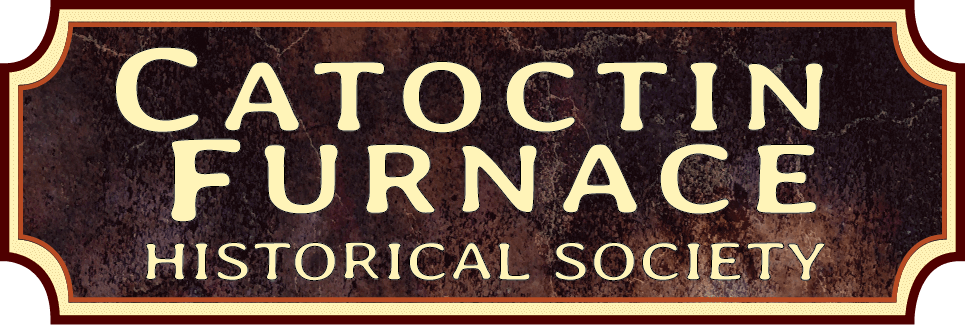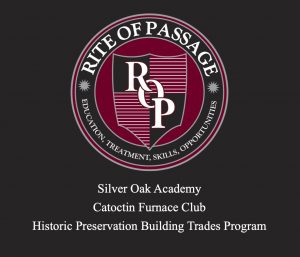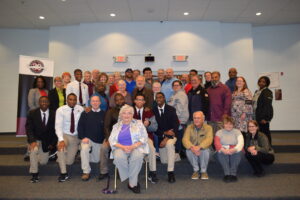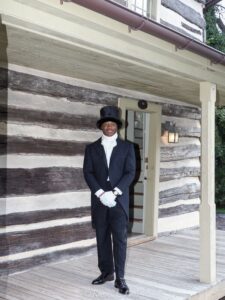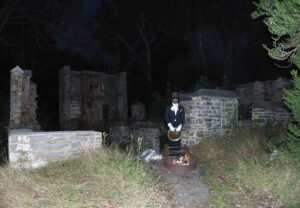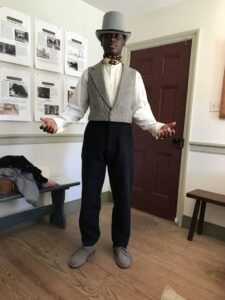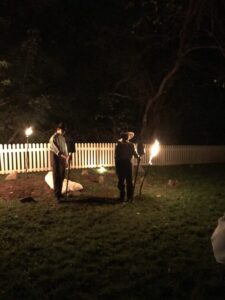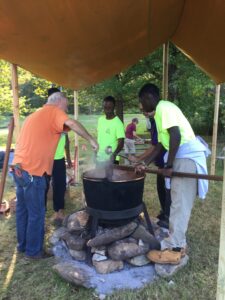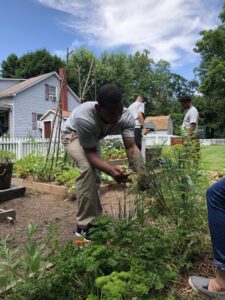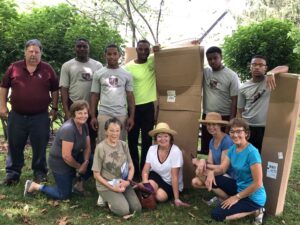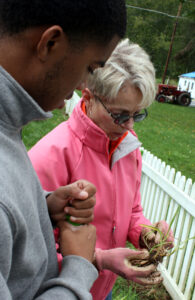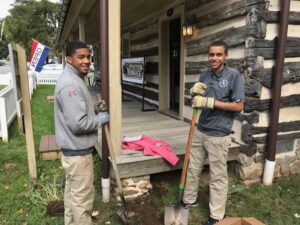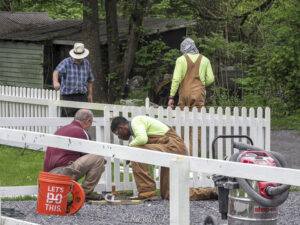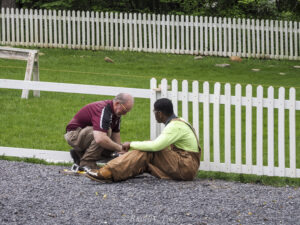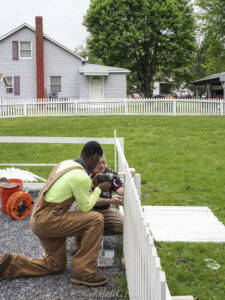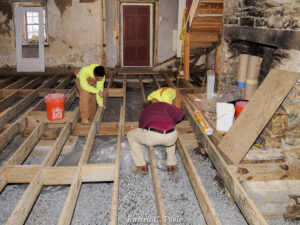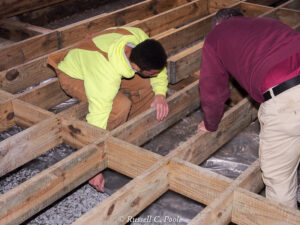Historic Preservation Building Trades
The Catoctin Furnace Historic Preservation Building Trades Initiative
The Catoctin Furnace Historic Preservation Building Trades Initiative is teaching at risk high school
students time-honored skills, ideas and values of fine craftsmanship through intensive hands-on training
in preservation trades such as carpentry, plumbing, electrical, plastering, roofing, window restoration,
masonry, etc. Students learn marketable real world job skills that they can use to work in their
community or begin their own business. The curriculum, faculty and inspiring community encourage
individual growth and curiosity, commitment to excellence and authenticity, and technical mastery.
WHO
The students at Silver Oak Academy are enrolled in a residential program in nearby Keymar, Maryland
pursuing their high school diploma while gaining job skills. The Catoctin Furnace Historic Preservation
Building Trades Initiative has partnered with Silver Oak Academy in this program, now in its 7th year.
The skills gained by the students help position them to work in well-paying and important jobs in their
communities. It is of note that fully one third of the buildings in Baltimore City (the home of many Silver
Oak Academy students) are located within a historic district and thus can take advantage of preservation
tax credits for restoration. However, there is a shortage of skilled craftsmen to undertake all aspects of
restoration on these historic structures. The historic preservation building trades program at Catoctin
Furnace teaches students a love of history, materials, quality workmanship, and working with their
hands to build, restore and preserve beautiful structures that are designed to last.
WHERE
The historic houses in Catoctin Furnace are excellent examples of the workers houses from the early
19th century. The students are currently working on multiple projects including historically accurate
fencing around the ca. 1810 Log Collier’s House and the Forgeman’s House. These buildings are ca.
1810-ca. 1830 and represent worker houses built by enslaved labor in the village and within sight of the
industrial complex. The village and houses have little changed over time. It provides a truly unique
setting for restoration and preservation training at the highest level of craftsmanship.
CURRICULUM
The program combines introductions to contemporary residential construction (necessary modern
amenities such as electricity, plumbing, etc.) with a thorough grounding in early nineteenth century
house construction. Through demonstrations and site work, students are exposed to a broad range of
construction methods, including preserving and uncovering architectural details and recreating
documented design elements. Students develop an understanding of building components and systems
and learn to compare current technology and traditional tools and practices.
EMPLOYMENT
Silver Oak Academy students would graduate with the skills needed to work with contractors and
institutions that specialize in preservation and conservation work, including historic millwork and
interior finish carpentry for traditional buildings. Job opportunities after graduation may include diverse
organizations and employers including: non-profit museums such as historic house museums,
preservation societies, educational programs, custom restoration companies, the National Park Service
and various private contractors throughout the United States. Graduates may also choose self-
employment, specializing in preservation/restoration work.
- 2019 Community Partners group photo
- 2019 Dejuan Ambrose presenting award to the Catoctin Furnace Historical Society, Inc.
- 2019 Historic Preservation Building Trades Graduates
- 2017 Chef Henry Ward teaching historic culinary skills to Silver Oak Academy students
- 2018 SOA student Larry Saunders as the butler in Spirits of the Furnace
- 2018 SOA student Larry Saunders as the butler in Spirits of the Furnace
- 2018 SOA student Michael Owumi as a worshipper in Spirits of the Furnace
- 2017 SOA students in Spirits of the Furnace
- 2019 SOA students make traditional apple butter during Fallfest
- 2018 Silver Oak Academy students using Ames Tool grant funding to work in historic kitchen garden
- 2018 Silver Oak Academy students using Ames Tool grant funding to work in historic kitchen garden. Pictured and trained in gardening by the Green-walled Garden Club members.
- Silver Oak Academy Students planting a strawberry bed with the Green-walled Garden Club, 2018
- Silver Oak Academy Students planting a strawberry bed with the Green-walled Garden Club, 2018
- Fence building photos of SOA Students & MIW construction
- Fence building photos of SOA Students & MIW construction
- Fence building photos of SOA Students & MIW construction
- 2019 SOA students laying new floor in Museum of the Ironworker
- 2019 SOA students laying new floor in Museum of the Ironworker
